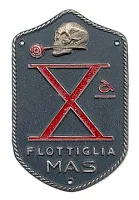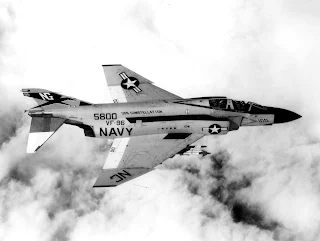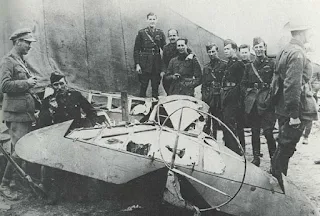"Dueling Eagles" is designed by Paul Rohrbaugh, with graphics design by Nils Johansson. It took me about three mins to find a map of Malta and I was able to find the area that Nils used for the game map - the "Grand Harbor" but more specific "French Creek". Right down to the forked ship dry docks. (that's a plume of black smoke, btw.)
It is an introductory level game, with one page of rules and an equal small amount of counters with three aircraft each for the Italians and the British, three AAA markers, a game turn marker, altitude markers, and a target marker, for a total of 18 double-sided counters. It is played on a very beautiful 8x8 grid game map of Malta's Grand Harbor area. Of course one needs to supply a deck of cards (or order the card set made just for this) and a 1D6.
One can order this card set for $*, but I would strongly urge you to buy the card set when you buy another game or buy four games and can get this game card set for free.
I seem to be always pushing these card sets and here is the reason why - besides having the action points correct where one does not have to do the math, they do have nice art on them, and things like (for example) Italian can attack any AAA. Basically, they replace the math and having to remember red or black face card rules, etc. The cards make life a little easier. Reminds me of a jingle that a certain fast food restaurant who shall remain nameless stole from me, so many years ago (bun wishes!). If I remember the words right when I wrote it so long ago - "Take life a little easier with High Flying Dice Game card sets".
Now, I hope you are wanting to get this game, but how? It's a pocket game and the majority of them are free and given away when one buys a game from either LPS, Inc or HFDG. Aye, there's the rub....
Game Setup: Setup is a breeze, as is all pocket games. With only 18 counters to worry about, it takes a mere 90 seconds to set up, as compared to the hours to figure out what to play, lol.
- Grab your coffee or high octane soft drink, a deck of cards (or the Dueling Eagles Card set), a 1D6, and the game. Pizza or chips is optional. Don't forget to sleeve the cards!
- Shuffle the card deck with one joker.
- British player picks the three sides that are friendly.
- British player places two AAA in corners of these sides and places one AAA in one of the center four squares.
- British player places the "target marker" in one of the center four squares, but not the same square as the AAA marker.
- Italian player places his three aircraft on his side board edge in any square, at any level.
- Lastly, the British player places one non-ace Gloster Gladiator and the Fulmar aircraft in any square on the British side board edge, at low, medium, or high level, opposite of the Italian Players aircraft.
- The Ace Gladiator enters at any friendly map edge at the start of turn 3.
- Italian player gets the first card draw (CD). If a joker is drawn, dis-card and ignore it.
Movement: The Italian player uses the black suit and the British player uses the red suit of cards.
- No player's aircraft can spend more AP's than it's attack factor.
- The Italian player has first card draw (CD):
- Any aircraft that exits the map are out of the game.
- If attacking, an aircraft must:
- Move at least 1 square or change level before attacking.
- Aircraft can only expend 1 AP per CD to make 1 attack.
- Aircraft have a weapons range of 2 squares.
- No combat is allowed if the aircraft being attack is in the same square.
- Attacker must designate the defending aircraft and the attacking aircraft.
- To resolve combat, see the rules.
- For AAA, consult the AA rules in the game under "AAA".
- Same for Bombing. I don't want to print all the rules here. :)
- 4 turns (or card deck shuffles) OR
- ends early when no opposing aircraft are on the map OR
- for the British player all AAA is suppressed.
- The game turn ends immediately when a joker is drawn for movement or combat
- or all cards have been drawn.
- the Italian player wins.
- If the Br.20m bomber successfully bombs the target or
- the Italian player has destroyed any of the British aircraft without losing any Italian aircraft.
- British Player wins if the target marker is still on the map or if the British player destroys more than 1 Italian aircraft.
- Otherwise the game is a tie.
 Malta’s strategic location made it a key stronghold in the Mediterranean
theater from which the Allies could wage their North African campaign and from which they could launch their eventual attack on Italy. On June 10th, 1940 (the day after Mussolini declared war on Great Britain) Italian bombers attacked Valletta and its harbors. The Regia Aeronautica began the aerial bombardment of the island from airbases in Sicily. On the first day, 55 Italian bombers and 21 fighters flew over Malta and dropped 142 bombs on the three airfields at Luqa, Hal Far and Ta Qali.
Later, 10 Italian Savoia-Marchetti SM.79s and 20 Macchi C.200s flew over the island, with no air opposition.
Malta’s strategic location made it a key stronghold in the Mediterranean
theater from which the Allies could wage their North African campaign and from which they could launch their eventual attack on Italy. On June 10th, 1940 (the day after Mussolini declared war on Great Britain) Italian bombers attacked Valletta and its harbors. The Regia Aeronautica began the aerial bombardment of the island from airbases in Sicily. On the first day, 55 Italian bombers and 21 fighters flew over Malta and dropped 142 bombs on the three airfields at Luqa, Hal Far and Ta Qali.
Later, 10 Italian Savoia-Marchetti SM.79s and 20 Macchi C.200s flew over the island, with no air opposition.
Here are a few books you might find interesting:
Fortress Malta: An Island Under Siege, 1940 - 43* (Hardcover) by James Holland
ISBN-10: 1401351867 ISBN-13: 978-1401351861
Siege: Malta, 1940-1943 (Hardcover) by Ernle Dusgate Selby Bradford
ISBN-10: 0688047815 ISBN-13: 978-0688047818
Time for the ratings:
Complexity of the game = LOW with med moderate overtones.
Solitaire = HIGH (very little work is needed)
Fun Level = VERY HIGH (the only thing missing is Prosciutto San Daniele!)
Nail biting = 8 fingers worth, starting on the 9th but it was saved.
Length of typical full game = 1/2 hour (30 minutes) to 1+ hours.
Out of the 5 games I have played 1 Italiano win, 2 Brit wins, and 2 draws. Both sides won and lost, It is pretty even, just the luck of the draw, as it always is, in game and real life.
Adapting the Game to miniatures:
With the game map having squares, it would be very easy to adapt this game to miniatures.
-ab out





















.jpg)











